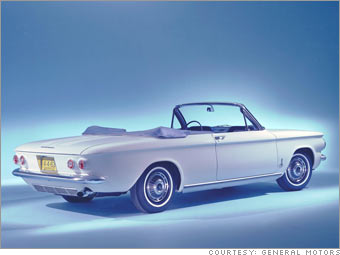The rear-engined Corvair, designed to compete against sporty European models then gaining popularity, earned a special place in automotive history. It was the subject of a chapter in Ralph Nader's book "Unsafe at Any Speed," which detailed the U.S. auto industry's overall reluctance to take safety seriously. The Corvair's alleged problems stemmed from its unusual rear-engined lay-out and the suspension that held it up. That design led to unstable emergency handling, according to Nader.
It's hard to say whether the Corvair was much more dangerous than other cars of its time. This was the early 1960s when safety was still, as Nader's book pointed out, a barely acknowledged afterthought. (Try to find anyone wearing a seatbelt in a 1960s car ad. For that matter, try to find a seatbelt.) You could probably name any number of cars that were, arguably, just as dangerous for a variety of reasons, including a few models that are remembered fondly today.
But the Corvair got top billing as a death trap and General Motors did its part to ensure a lasting impression. Instead of just improving the Corvair's rear suspension, which it did, GM also hired private investigators to dig up dirt on Nader. The private eyes didn't get any dirt, but they did succeed in forever typecasting GM as America's favorite auto industry bad guy and the Corvair as a killer.
GM and the Corvair, by being such an easy target, ultimately helped bring about the creation of the National Highway Traffic Safety Administration and things like crash tests and safety standards. There can be no question that our automobiles are much safer today as a result.
Before all the bad press finally clobbered sales, despite the improved rear suspension, the Corvair was produced in a surprising variety of body styles including a van, a station wagon, and a pickup truck with a side ramp. In all, about 1.8 million were made.

